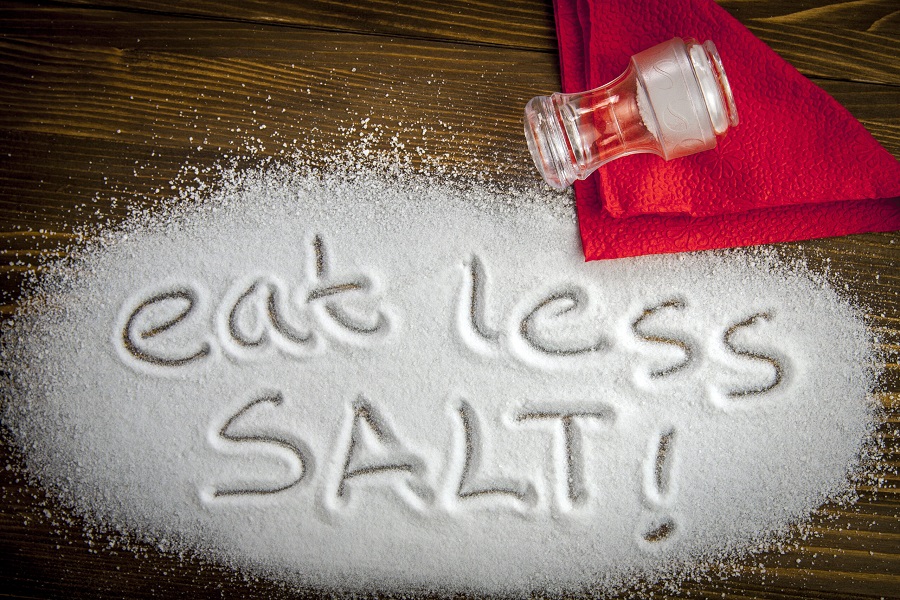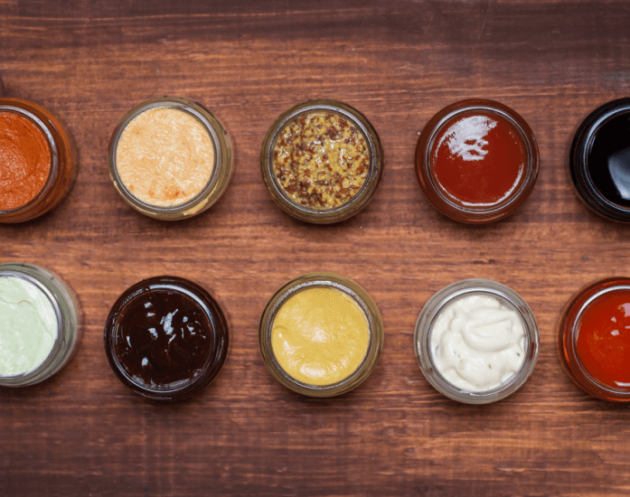Cooking without salt is a necessity for those suffering from hypertension, but it could also be an excellent ploy to reduce water retention. Cooking without salt or decreasing the quantities, does not mean giving up taste but educating yourself to a more correct and healthy eating style without necessarily having to make too many sacrifices. Here we give you some tips.
Salt in the diet
While in the past salt was a precious and rare commodity, so much so that the word ‘wages’ derives from this, the modern diet makes excessive use of it.
In the right quantities, sodium is not only an excellent preservative, but also a hunger stimulator. And it can have beneficial effects on health because it slows down dehydration and is useful in case of hypotension.
All the main foods contain salt (bread and rusks, cold cuts, soups, ready meals, cheeses and snacks, and all prepackaged and precooked foods), so it is very difficult to do without it: the reduction of salt (or better sodium ) in food leads to a sharp decrease in its appreciation.
The right amount of salt
According to the WHO, the daily need for salt for an adult is less than 4 gr .
The classic table salt is actually 95% sodium chloride (NaCI) and contains about 60% chloride and 40% sodium , so it would be advisable to take about 2 grams of sodium (about a teaspoon tea) per day .
Today, the average consumption of salt in Italy is 10 grams per day (corresponding to 4 grams of sodium) and some people consume even more than 12 grams per day, with obvious negative effects on health.
Cooking without salt is good for your health
The harmful effects of excess salt have been known since the early 1970s. It has been found that blood pressure increases through water retention and this leads to an increased risk of cardiovascular and kidney disease, hypertension , stomach cancer.
It is also shown that excessive consumption of salt increases the urinary elimination of calcium and promotes bone decalcification, leading to osteoporosis.
By keeping the sodium level under control, blood pressure is also kept under control, thus counteracting the onset of cardiovascular diseases.
So let’s see how to eat healthy and cook without salt.
Cooking without salt makes you lose weight
Salt is a flavor enhancer, and is used to increase the palatability of foods , but can lead to increased calorie absorption.
Therefore representing one of the factors of childhood obesity and contributes to greater overweight in adults.
This is why a low-salt diet is said to ‘make you lose weight’, because by decreasing water retention, it deflates the tissues , improves blood circulation and slims, but also because it makes foods less appetizing , discouraging excessive intake.
How to cook without salt
Cheat the salty taste receptors
One solution is to ‘cheat’ the salty taste receptors. Our need to eat salty is actually almost always the need to satisfy the taste and not a real physiological need.
We can thus deceive the taste receptors by acting in various ways: by replacing the salt with spices , or by giving a little acidity or by adding elements of umami .
Furthermore, given the importance of smell in the perception of taste, we can replace the salt (sodium) with other specific seasonings or ingredients.
Finally, some presentation methods also have the ability to enhance the salty flavor. In particular, in the case of solid foods, the perception of salty depends on the consistency of the food. For example, foods such as cheese, in particular goat, gongorzola, gruyère and peanuts, send information to the brain of a salty taste, reinforcing the impression, even in the presence of very little sodium.
Therefore, the combination of flavors that strengthen the salty taste and the presence of visual and olfactory stimuli that give the impression of salty taste allows to increase the perception of flavor.
Gradually decrease the salt
Good food may contain little or no salt. When you have the habit of eating very salty, reducing it gives the impression that the food is lacking in taste. But in a short time you get used to the new and you begin to appreciate a cuisine with little salt, slightly different, but just as tasty.
No salt does not mean lack of taste. Salt is only used to ‘excite’ the taste buds, which can otherwise be fooled.
Recipes for cooking without salt
Here are some recipes and lots of tips:
- The cooking water disperses the flavors , so it is advisable to use gomasio instead of cube in soups and minestrone.
- For second and first courses , spices and aromatic herbs such as pepper , curry , chilli , garlic and nutmeg are perfect , which also have many medicinal properties and often aid digestion.
- Use foods that are pickled or that naturally have a higher sodium content. Such as aged cheeses, anchovies, olives, pickles and dried tomatoes .
- Use the lemon zest and vinegar to dress the meat and salad.
- Prefer fresh foods to canned or frozen foods. All foods, in fact, have a natural amount of sodium or sodium glutamate , including fruit.
- It is possible to marinate meat or fish
- Use algae ( kombu , wakame , agar agar , nori ), in powder or flakes to flavor broths and legumes. You will thus be able to count on the intake of important substances contained in them such as mineral salts, vitamins and antioxidants.
- Use sea salt, which is also rich in iodine , a friend of the thyroid, or whole salt, which preserves its natural elements intact, as it is not very refined.
But if you really can’t do without salt, for example in pasta water or homemade sauce, buy low-sodium salt (after talking to your doctor). It contains more potassium and is an alternative that is recommended for hypertensive as it contains 75% less sodium.
Artichokes stewed in sherry
A simple and gourmet dish, with character, but without salt. Fry a clove of garlic and the chopped shallot in olive oil , add a pinch of cumin , the artichoke hearts cut into quarters, a little diced tomato, a pinch of white wine, season with fresh pepper and stew for a few minutes. Finally, adjust the sauce with a spoonful of sherry, sprinkle with chopped basil and lightly toasted pine nuts.
What to cook without salt: the foods to avoid
Among the foods that are rich in it, however, there is certainly fish (especially crustaceans) and meat (especially sausages).
But also pay attention to processed baked products (crackers, bread sticks, snacks), condiments ( soy sauce , ketchup ) and salty snacks ( peanuts , chips).
Among the foods poorest in sodium there are vegetables and vegetables . Which means they are rich in potassium , an ally of the brain and heart.
Recipes without salt but with spices
Learning to cook with herbs and spices allows you to limit the use of salt or significantly reduce the quantities used. Aromatic herbs, such as basil, parsley and sage can also be combined with spices to best enhance the flavors and still make the dishes savory.
Cooking without salt and oil
Although in our gastronomic tradition we often tend to prefer flavors with strong and decisive tastes, it is important to get used to cooking without salt and, if possible, without oil, or in any case limiting its use.
To limit or completely eliminate the oil, one must rely on alternative cooking techniques to traditional ones, in which fatty seasonings are not always necessary or very reduced:
- steaming, it does not disperse the mineral salts present in the food and maintain its natural flavor.
- microwave , maintains the natural flavor of food
- vacuum and vasocooking , limit the dispersion of color, weight and aroma of the food.
- low temperature , ideal for keeping meat and fish soft.
Other useful tips
- Cayenne pepper , a spice with interesting characteristics
- Pimento : what it is and how we can use carnation pepper in the kitchen
- Pink pepper : properties and uses in the kitchen
- Garlic : growing it at home or in the garden: the guide for everyone
- Smoked salt , a secret known to those who love to cook




